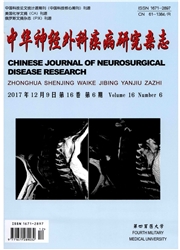

 中文摘要:
中文摘要:
目的探索海马神经干细胞在特定条件下分化成γ-氨基丁酸能神经元的情况,为颞叶癫痫的细胞替代学治疗奠定基础。方法新生大鼠海马组织中的神经干细胞在体外增殖后,加入特定的细胞因子进行诱导,使其向γ-氨基丁酸能神经元分化,对分化的细胞进行神经元烯醇化酶(NSE)、微管相关蛋白(MAP-2)、γ-氨基丁酸(GABA)、胶质纤维酸性蛋白(GFAP)和半乳糖脑苷脂酶(GalC)免疫荧光染色鉴定,判断其分化成γ-氨基丁酸能神经元的情况。结果海马神经干细胞诱导贴壁后即发生分化,其中几乎全部分化成神经元(γ-氨基丁酸能神经元),只有极少的胶质细胞和少突胶质细胞形成。结论从海马神经干细胞中几乎可以完全诱导形成γ-氨基丁酸能神经元,这为颞叶癫痫的细胞替代学治疗奠定了基础。
 英文摘要:
英文摘要:
Objective To explore differentiation induction of neural stem cells into γ-aminobutyrie acidergic neurons. Methods Neural stem cells were obtained from hippocampus of rat "and induced to differentiate into γ-aminobutyric acidergic neurons by adding cytokines. The differentiated cells were identified by the immunofluorescence of neuron specific enolase ( NSE ), mierotubule-associated protein-2 ( MAP-2 ), γ- aminobutyric acid (GABA), glial fibrillary acidic protein (GFAP) and galaetocerebrosidase (GalC). Results Among the differentiated cell types, almost all the cells were γ-aminobutyric aeidergic neurons. Only a small amount of qlial cells and oligodendrocytes were present. Conclusion Neural stem cells from hippocampus can be totally induced to differentiate into γ-arninobutyric acidergic neurons, which brings a new hope in treating temporal epilepsy by transplantation of neural stem cells.
 同期刊论文项目
同期刊论文项目
 同项目期刊论文
同项目期刊论文
 期刊信息
期刊信息
